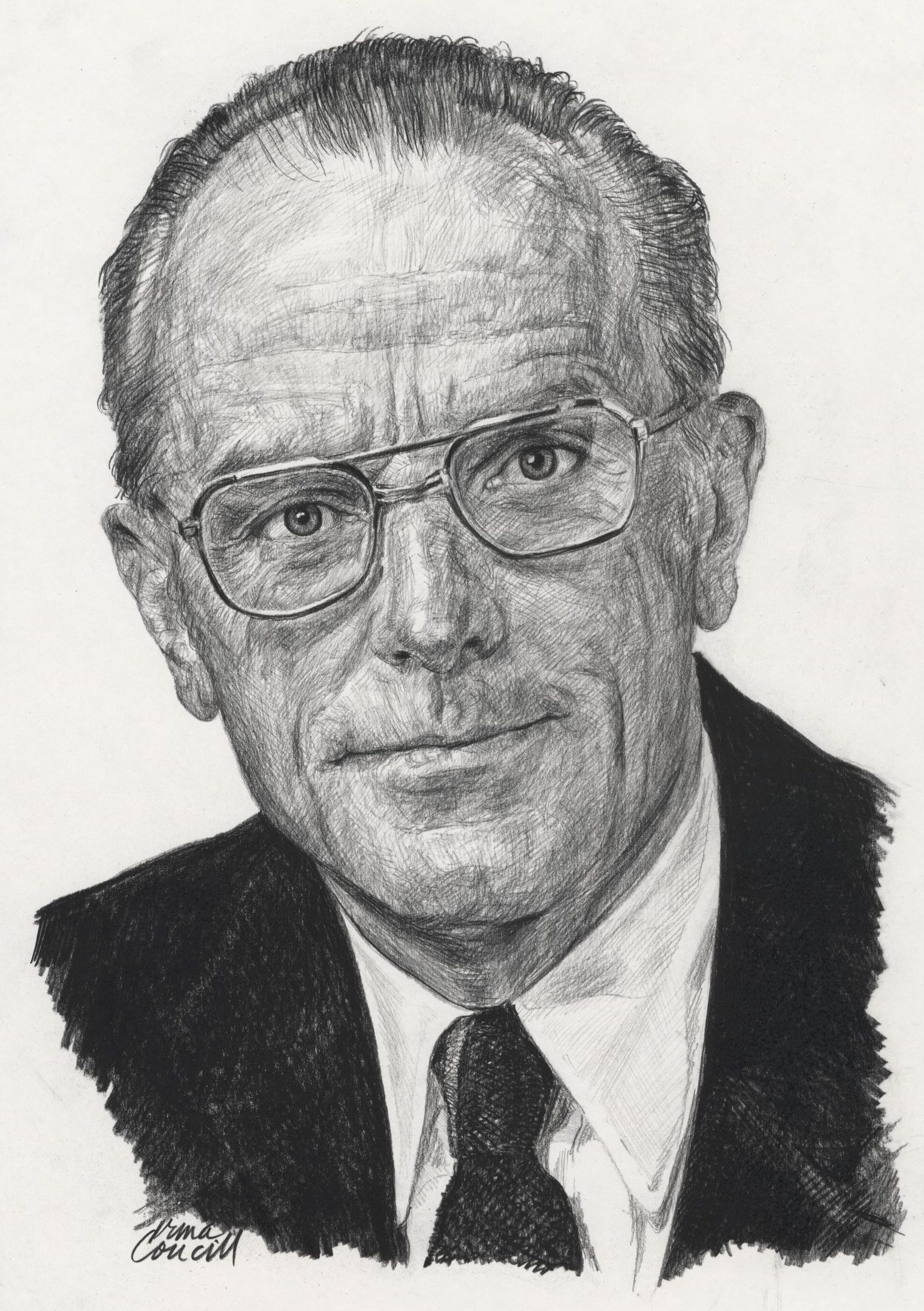Elvie Lawrence Smith

Birth Date: January 8, 1926
Birthplace: Eatonia, Saskatchewan
Death Date: August 4, 1999
Year Inducted: 1993
Awards: CM; LLD (Hon); DSc (Hon); DEng* (Hon); The McCurdy Award; The CD Howe Award; The Gold Medal (Poland); The Tom Sawyer Award (USA); Aerospace Engineering Leadership Award (SAE); Thomas W Eadie Medal (The Royal Society of Canada)
His vision, dedication and leadership in the design, development, and manufacture of gas turbine engines, from both the technical and managerial aspects, has been of lasting benefit to Canadian aviation
Education and Flight
Elvie Lawrence Smith, C.M., B.Sc., M.Sc., D.Eng. (Hon), LL.D. (Hon), D.Sc. (Hon), was born in Eatonia, Saskatchewan, on January 8, 1926. He graduated from the University of Saskatchewan with a Bachelor of Science in Mechanical Engineering (with Great Distinction) in 1947. He earned his Master of Science degree at Purdue University in Indiana. While at Purdue he pursued his other interest, flying, and qualified for his Private Pilot's Licence.
Research Engineer
Smith spent five years at the National Research Council (NRC) as Research Engineer in its engine laboratory. He worked on projects dealing with gas turbine anti-icing and thrust boosting, as well as research on after-burning. He was the principal engineer involved in the development of a unique system where the after-burner fuel was sprayed directly into the turbine blades to reduce their temperature, and then burned in the after-burner downstream of the turbine. During his last two years with the NRC, he was seconded to the Flight Research Section where he was the Project Manager carrying out the testing of these afterburners on a Gloster Meteor and a Canadair F-86 Sabre.
Gas Turbine Engines
He joined Pratt & Whitney Aircraft of Canada (P&WC) in January 1957, as an Analytical Engineer and a key member of a team assembled to initiate the design, development, and manufacture of gas turbine engines. Initially, he examined engines in the 1,500 to 2,000 shaft horsepower (shp) category and then the team began work on the development of an engine for the new, light Canadair CL-41 Jet Trainer, the Tutor. The JT-12 engine, although rejected for the CL-41, was further developed by Pratt & Whitney at Hartford, U.S.A., and proved successful.
The Most Successful
In 1958 Smith toured a number of airframe companies with other members of the P&WC team, promoting a small turbine engine. At Beech Aircraft it was learned that a cabin class aircraft had just flown, and that Beech was interested in gas turbine engines. The team returned to Montreal and redesigned the engine from its initial rating of 350 shp rating to 450 shp to meet Beech's requirements. That engine was the PT6, and today it is the most successful and highest-production gas turbine engine in commercial aviation history. The latest models produce nearly 2,000 shp.
P&WC Engine Growth
By 1961, Smith was responsible for all gas turbine development and activity at P&WC. In 1962 as Engineering Manager, his responsibility covered all engineering activities. In 1966 he was named Vice-President, Engineering, and in 1970, Vice-President, Operations. During the next eight years he oversaw the growth of engineering and manufacturing activity, and the continued development of a number of P&WC gas turbine engines. These engines set world standards for design excellence and dependability in all types of environments. In 1978 he was appointed P&WC's Executive Vice-President, Operations, and in March 1980, President and Chief Executive Officer. Smith's interest in engineering education and research promoted cooperation between P&WC and advanced educational institutions. He also increased the company's budget for Research and Development.
During the following years, markets were enlarged, and production reached 3,300 gas turbine engines per year, making P&WC the world's largest producer of small aircraft gas turbine engines. These engines are now used in more than 150 countries and power more than 140 types of aircraft. In 1984 Smith was made Chairman of the Board and Chief Executive Officer. He retired from active management in 1987 but remained Chairman of the Board until 1994.
Awards and Recognition
He was awarded several Honorary Doctorates in recognition of his leadership in the field of engineering. These included: Doctor of Laws (Concordia, 1983), Doctor of Engineering (Carleton, 1984), Doctor of Engineering (Purdue, 1987), and Doctor of Science (Saskatchewan, 1997).
Smith was a Fellow of the Canadian Aeronautics and Space Institute (CASI) from which he received the McCurdy and C.D. Howe Awards in 1973 and 1983 respectively. Other awards for his work include: the Thomas W. Eadie Medal of the Royal Society of Canada, the Gold Medal of the Polish Peoples Republic, the American Society of Mechanical Engineers R. Tom Sawyer Award (all awarded in 1985). In 1992 he was appointed a Member of the Order of Canada (C.M.). In 1994 he was awarded the Society of Automotive Engineers (SAE) Aerospace Engineering Leadership Award.
Elvie maintained his love for flying. He held a multi-engine IFR rating, a float endorsement as well as glider instructor rating. He was the fourth Canadian to hold the 'Gold C' badge in gliding. He regularly flew aerobatic routines in a Yak 55M.
Elvie Lawrence Smith died at St. Lambert, Quebec on August 4, 1999.
Elvie Lawrence Smith was inducted as a Member of Canada's Aviation Hall of Fame in 1993 at a ceremony held in Edmonton, Alberta.
To return to the Inductee Page, please click here.
